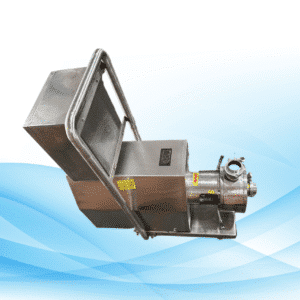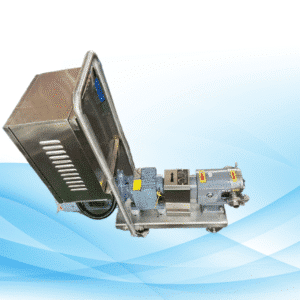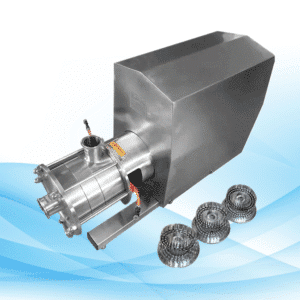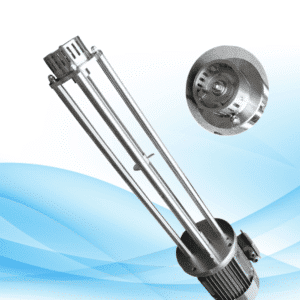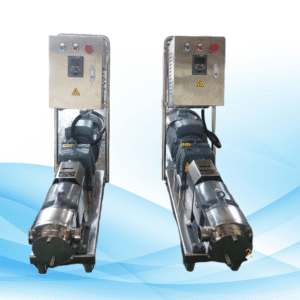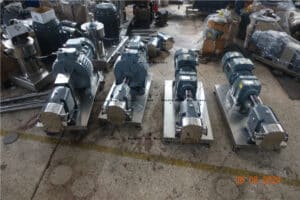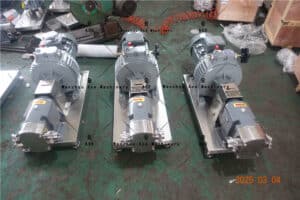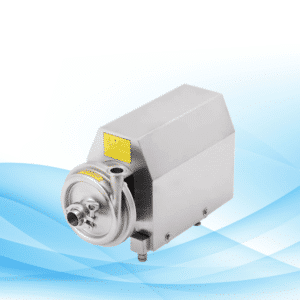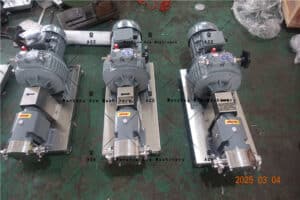Alfa Laval Lobe Pump Overview
As with any industrial-grade pumps, the Alfa Laval Lobe Pump is notable for its effectiveness and reliability in processes across the food, beverage, pharmaceutical, and chemical industries. Its accuracy, adaptability, long-lasting components, and multifunctional nature enable it to be one of the most favored pumps in the food industry. It is best utilized for transferring thick liquids, slurries, and fluids that are sensitive to shearing forces. For further assistance on using, servicing, or diagnosing faults in an Alfa Laval Lobe Pump, the Alfa Laval Lobe Pump Manual offers step-by-step instructions tailored to the needs of the users.
Article Overview
In this article, we will cover some of the important topics from the Alfa Laval Lobe Pump manual, like its prominent characteristics, instructions on how to use it, rules for maintenance, and malfunctions and their fixes in such a way that the readers can appreciate and grasp the full capability of this remarkable piece of equipment.
Introduction to Alfa Laval Lobe Pumps

Through their decades of experience, Alfa Laval has built a reputation as one of the top companies to go with as a source for industrial equipment. They manufactured high-quality pumps like the Alfa Laval Lobe Pump that is made to suit a diverse range of fluid transfer operations like transferring high viscosity liquids, slurries, and materials that are sensitive to shearing forces. Smooth and efficient transport of fluids is achieved by the lobe pumps because they utilize rotating lobes, which ensures constant flow delivery while protecting the fluid’s integrity.
Like other lobe pumps, the Alfa Laval pump is mainly used in the food and beverage industry, dairy sector, and pharmaceuticals industry, and other sectors where hygiene and cleanliness are paramount. Due to its specific configuration, it still remains a preferred pump for critical processes which involve sensitive products and where minimum degradation is required.
To preserve its optimum operational parameters and ensure prolonged service, it is necessary to know the primary structures, processes, and maintenance actions of the Alfa Laval Lobe Pump. For this purpose, the manual contains all the required information to perform the various processes efficiently.
Main Characteristics Of the Alfa Laval Lobe Pump
The Alfa Laval Lobe Pump comes with several features that set it apart from other types of pumps in the market. Some of the key features include:
1. Flexibility In Liquid Handling
With respect to the wide range of fluids encountered in different processes, the pump can accommodate materials with low to high viscosities. This includes thick slurries, shear-sensitive liquids, and delicate products such as dairy or pharmaceutical formulations.
2. Tetraform Lobe Pump
The Alfa Laval Lobe Pump was specifically designed to be easy to clean and to have a hygienic construction. Its design meets blistering standards for contamination in the food and beverage industry, pharmaceuticals, and even biotechnology. The pump’s brush finished surfaces and sanitary fittings not only minimize contamination, but also comply with numerous international standards.
3. Durable Efficiency
Reliability is one of the core principles the Alfa Lobe pump was built on. The robust construction of the pump guarantees high performance rate for a long service life of 25,000 cycles or even more, especially in challenging environments. Its durable structure combined with the stainless steel construction provides outstanding corrosion and wear resistance.
4. Shear-Sensitive Liquid Quality Preservation
Products that are packed with fluids require precise, delicate operations. With the lobe design, the pump can do gentle yet effective pumping actions that are ideal for shear-sensitive liquids. In the food industry, this feature is especially valuable for keeping the integrity of the fluid preserved.
5. Changeable Construction
Depending on specific application needs, Alfa Lavel Lobe Pumps can be tailored to different sizes and configurations for precise customizable solutions. Because of this factor, they are applicable in various industries as well as processes.
How to Operate an Alfa Laval Lobe Pump
To operate an Alfa Laval Lobe Pump well, one must comprehend its parts and follow installation and operational best practices. Much detail is in the Alfa Laval Lobe Pump Manual, however, here are the steps needed to operate the pump smoothly:
1. Installation
The pump must first undergo checks for premises and elapse checks for positive positioning. Doing so would ensure no alignment, gasket, and seal issues are present from the manufacturer’s side.
As tight as all screws should be, make sure the pump is not attached too snugly to the pipes and motor.
2. Startup Procedure
Only after all pertinent valves are primed should the pump be unlocked, otherwise an airless chamber with compressible fluid ensues, trapping air that causes damage through cavitation.
Ramp up the drive’s primary operational speed to minimals first before moving into further fleshing it out.
3. Monitoring Pump Performance
Stay alert for any possible abnormalities, listening closely for strange pumping sounds as this could signal problems such as poor lubricity, misalignment, or cavitation.
Keep an eye on the system’s pressure and flow rate. The pump’s functionality should fit within the designated parameters for best results.
4. Stopping the Pump
To stop the pump, bring the speed down incrementally before halting the motor. This will help to minimize damage done from sudden stops.
Always adhere to the manufacturer’s guidelines for stopping and securing the pump post-usage.
Maintenance and Care of Alfa Laval Lobe Pumps
Effective maintenance increases the life expectancy of an Alfa Laval Lobe Pump and ensures its functions are performed efficiently. Peak performance translates to an optimally functioning device, which reduces the probability of incurring expensive downtimes. Detailed instructions for routine maintenance can be found on the Alfa Laval Lobe Pump Manual, nonetheless, here are some critical pointers to keep in mind:
1. Routine Cleaning
Contamination build up poses serious issues, especially where hygiene is a prerequisite to cleanliness. Such cases require the pump to be sanitized to eliminate undesirable remnants after each use. The cleaning method should cater to the type of fluids being pumped.
2. Lubrication
Failing to follow the manufacturer’s guidelines on bearing lubrication frequency and type will lead to subpar performance in the pump. The aging process will be accelerated and lifespan potentially shortened; excessive wear is proven to be detrimental when coupled with deficient lubrication.
3. Seal and Gasket Checks
Check the seals and gaskets periodically for any excessive wear or damage. Replace damaged seals to prevent leakage, which could diminish the efficiency of the pump and potentially lead to system failures.
4. Rotor and Lobe Inspection
Check the rotors and lobes for any defects or damages. These components may wear or sustain damages resulting in reduced pump performance. Continued operation without replacing worn parts creates the risk of sudden pump failures and costly downtimes.
5. Regular Inspections
Carry out periodic inspections of other cores, such as the shafts and bearings. Look out for any suspicious wear and tear, slippage, overheating signs, and misalignments.
Pump Troubleshooting
From time to time, even the most dependable pumps encounter problems. The Alfa Laval Lobe Pump Manual includes a complete troubleshooting guide for resolving common pump problems. Below are some of the most common problems:
1. Cavitation
- Reason: Lack of inlet pressure or excessive air within the system.
- Resolution: Proper pump inlet pressure must be maintained and air must be purged out to eliminate pockets.
2. Pump Overheating
- Reason: Insufficient lubrication or excessive strain on the pump.
- Resolution: Monitor lubrication levels and ensure the pump is functioning within its operational limits.
3. Leakage
- Reason: Defective seals or gaskets.
- Solution: Replace seals and ensure proper sealing during back assembly inspection.
4. Flow That Is Sluggish
- Cause: Grot or erosion of the rotor or lobes.
- Solution: Overhaul the rotors and lobes, and service or substitute where needed.
Preserved Functionality Questions (PFQs)
1. Cleaning Calendar
How often should I clean my Alfa Laval Lobe Pump?
It is directly proportional to the nature of the fluids being processed. In the hygienic sectors like food and pharmacy, cleaning is mandatory after every usage.
2. Maximum Viscosity
What is the maximum viscosity that an Alfa Laval Lobe Pump can handle?
With model consideration, Alfa Laval Lobe Pumps can handle fluids of high viscosity.
3. Noticeable Change
How do I know when my pump needs maintenance?
Proactive inspections and continuous monitoring are fundamental. Watch out for strange sounds, lower flow rates, pressure changes, and a host of other maintenance oversight.
4. Food Grade Applications
Can I use an Alfa Laval Lobe Pump for food grade applications?
Specifically designed for food-grade applications, pumps are safe and compliant with food regulation laws.

